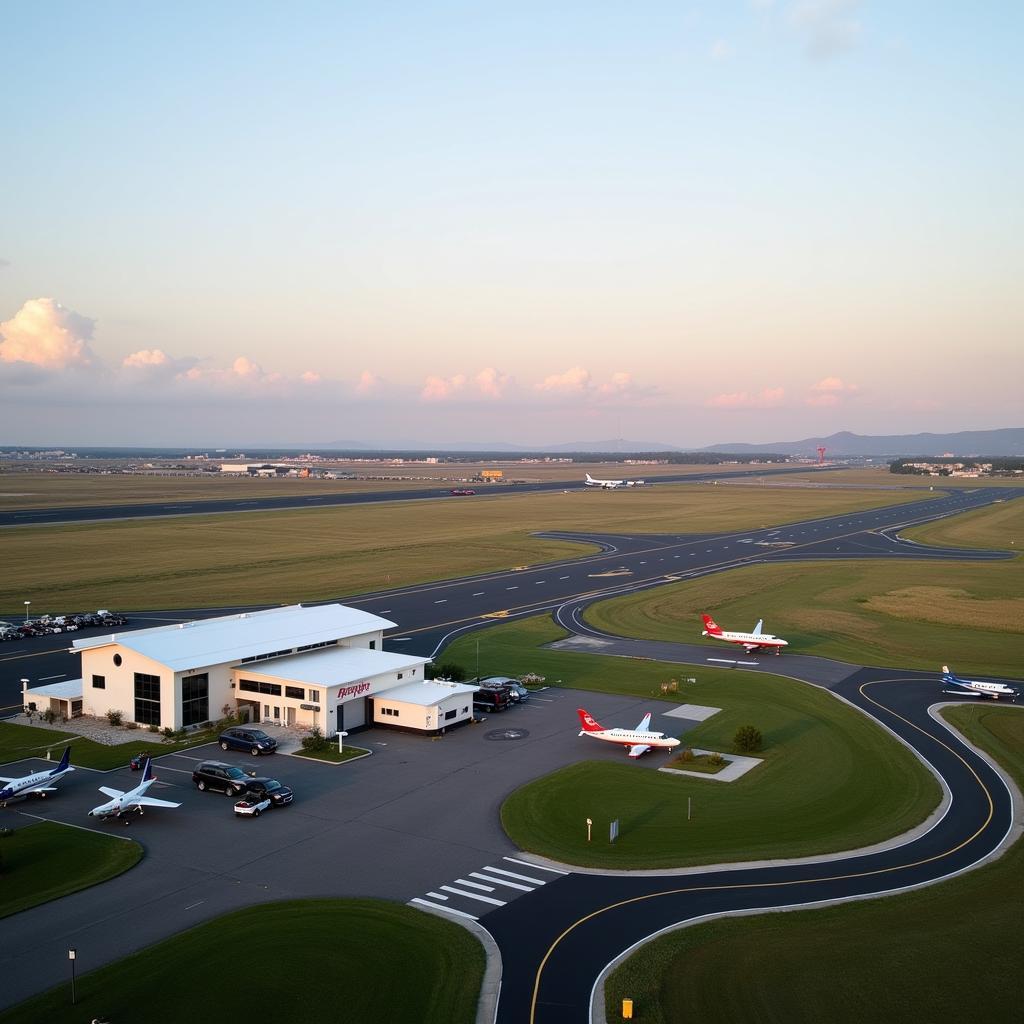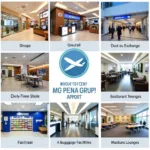The world of aviation is filled with fascinating terminology and locations, and the phrase “A A Academy Airport” is a prime example. This guide aims to explore the various facets of what an “a a academy airport” might entail, from flight schools and training facilities to the specific airports they utilize. We’ll delve into the crucial role these academies play in shaping the future of aviation. Let’s take off on this informative journey together! airport academy
What Does “A A Academy Airport” Really Mean?
The term “a a academy airport” likely refers to an airport primarily used by a flight academy. These specialized airports might be smaller, focusing on training operations rather than commercial flights. They provide the perfect environment for aspiring pilots to hone their skills. Such airports often have shorter runways, less air traffic, and dedicated training areas, allowing student pilots to practice maneuvers and procedures without the pressure of busy commercial operations.
The Importance of Dedicated Training Airports
A dedicated training airport, like an “a a academy airport,” offers numerous benefits. The reduced traffic allows for more focused learning and minimizes distractions. Furthermore, these airports often house maintenance facilities, simulators, and classrooms, creating a comprehensive learning environment.
 A A Academy Airport Training Facilities
A A Academy Airport Training Facilities
Exploring the World of Airport Academies
Airport academies, sometimes referred to as aviation academies, are institutions dedicated to training future pilots and other aviation professionals. They offer a range of programs, from private pilot licenses to commercial pilot certifications and beyond. Many also provide specialized training in areas such as aircraft maintenance, air traffic control, and aviation management. Attending an airport aviation academy can be a stepping stone to a rewarding career in the skies.
Choosing the Right Airport Academy
Selecting the right flight school is a crucial decision for any aspiring pilot. Factors to consider include the academy’s reputation, curriculum, instructors’ experience, and the type of aircraft used for training. It’s also important to research the airport academy facilities and resources.
Beyond the Basics: Specialized Training
Beyond basic flight training, many “a a academy airports” and their associated academies offer specialized courses. These might include instrument ratings, multi-engine certifications, and even training for specific aircraft types. Some academies even partner with airlines to offer tailored programs that prepare students for careers with that particular airline.
The Future of Aviation Training
The aviation industry is constantly evolving, and so is the training required to become a pilot. Innovations such as advanced flight simulators, virtual reality training, and the integration of drones into airspace management are transforming the landscape of aviation education. “A A academy airport” environments are adapting to these changes by embracing new technologies and updating their curricula to equip students with the skills needed for the future of flight.
“The future of aviation relies heavily on the quality of training provided by these academies,” says Captain Eva Rodriguez, a seasoned pilot with over 20 years of experience. “Investing in modern training methods and facilities is crucial for developing the next generation of skilled and safe pilots.”
Connecting the Dots: Airports and Academies
The connection between an airport and an academy is symbiotic. The airport provides the necessary infrastructure for practical training, while the academy supplies the demand for airport services, creating a mutually beneficial relationship.
 Symbiotic Relationship Between Airports and Academies
Symbiotic Relationship Between Airports and Academies
about us images related airport academy provides further insights into the facilities available. “Seeing students progress from their first solo flight to earning their commercial pilot’s license is incredibly rewarding,” adds John Davis, Chief Flight Instructor at a prominent aviation academy. “It reinforces the importance of the work we do and the impact these academies have on the aviation industry.”
Conclusion
“A a academy airport” represents a vital component within the larger aviation ecosystem. These specialized airports and associated academies play a critical role in training the next generation of pilots and aviation professionals, ensuring the continued growth and safety of the industry. The combination of dedicated facilities, experienced instructors, and a focus on safety makes these hubs essential for shaping the future of flight. yelahanka airport and manipal airport are examples of how airports cater to specific training needs.
FAQ
- What is an “a a academy airport”?
- What are the benefits of training at a dedicated airport?
- How do I choose the right flight school?
- What specialized training options are available?
- How is technology changing aviation training?
- What is the typical cost of flight training?
- What are the career prospects for pilots?
When needing support please contact us by Phone: +13089626264, Email: [email protected] Or visit us at: 404 Bothwell St, Oxford, NE 68967, United States. We have a 24/7 customer service team.
